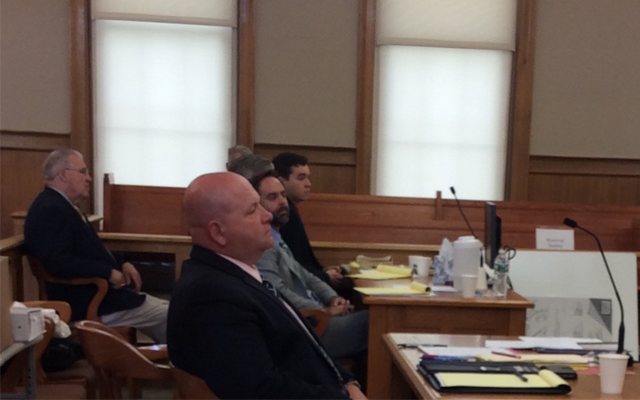
HOULTON, Maine — Jurors began deliberating Tuesday afternoon in the trial of a 20-year-old Houlton man accused of beating and stabbing to death 61-year-old Keith Suitter more than two years ago.
After about three hours, they adjourned for the evening, but not before sending Superior Court Justice Hal Stewart II a note asking to hear some of the recorded evidence in the case played back for them. The justice did not specify in the open courtroom what would be played back but indicated that the jurors would hear it in the morning when they resume deliberations.
During the closing arguments that began shortly after 8 a.m. and wrapped up shortly before 1 p.m., prosecutor John Alsop stressed to the jury that all the evidence points to Dobbins’ guilt.
Reginald Dobbins, who was 18 when arrested and charged with murder by Maine State Police, has been on trial for the past seven days in Aroostook County Superior Court in Houlton.
Alsop reminded jurors that Dobbins had done three different interviews with police and had given conflicting statements in every one. In the first interview, the prosecutor said, Dobbins contended that he and his co-defendant, Samuel Geary, were near Keith Suitter’s residence where they were headed to buy drugs when they heard other male voices in the vicinity. In the second interview, Alsop pointed out, Dobbins told police that Geary had beaten Suitter to death with a hammer and also stabbed him, cutting himself in the process. He also said that Geary had stolen Suitter’s truck from the crime scene. In the final interview with detectives, Dobbins admitted that he was the one who was driving Suitter’s truck away from the crime scene.
After a judge ruled that Samuel Geary, who was 16 when Suitter was killed, would be tried as an adult, Geary pleaded guilty to murder in Washington County Superior Court in Machias on May 25. No sentencing date has been set yet for Geary. He had been expected to testify at Dobbins’ trial, but ended up pleading the fifth amendment against self-incrimination when called to the stand late Friday.
During his bind over hearing last year, Geary testified that Dobbins had pressured him to take part in the crime after a day of drinking and using drugs. After he and Dobbins went to Suitter’s home to buy drugs, according to Geary, Dobbins pulled a hammer out of his jacket and struck Suitter with it multiple times.
Dobbins then asked Geary to stab Suitter, but Geary said he cut himself with the folding knife when he tried. That’s when Dobbins grabbed the knife from him and stabbed the victim, the younger defendant testified last year.
On Tuesday, prosecutor Alsop told jurors that “Reginald Dobbins and Samuel Geary acted as accomplices, mutually assisting each other in this murder. But the defendant claims he was a bystander. The state submits that the evidence demolishes that claim.”
The state medical examiner previously reported that Suitter had suffered blunt-force trauma consistent with having been struck 21 times with a hammer and stabbed 10 times in the head and back.
The hammer that is believed to have killed Suitter was found in a drawer in the Dobbins home. A knife that police say also was used in the murder was found in a hole in the wall in Reginald Dobbins bedroom. Dobbins at first said that his nephew put the knife in the hole in the wall. Alsop pointed out Tuesday that Dobbins’ nephew is just 3 years old. Dobbins later told police that Geary put the knife there.
In his closing statement Tuesday defense attorney Hunter Tzovarras blamed Geary for the murder. He said that Dobbins gave conflicting statements to police because he was frightened and traumatized after the murders. He also pointed out that none of Dobbins’ DNA was found on the weapons that were used in the murder. The attorney zeroed in on a black trench coat that belonged to Dobbins but that Dobbins told detectives that Geary was wearing the night of the murder.
A forensic specialist said that Dobbins’ DNA was found on the cuffs and collar of the jacket, along with the unidentified DNA of two other individuals.
“There are two other individuals’ DNA on the jacket, but there is not enough DNA to test it, so we don’t know whose DNA it is,” said Tzovarras.
Fourteen members of the Suitter family were present in the courtroom Tuesday, along with six members of the Dobbins family and two members of the Geary family.




